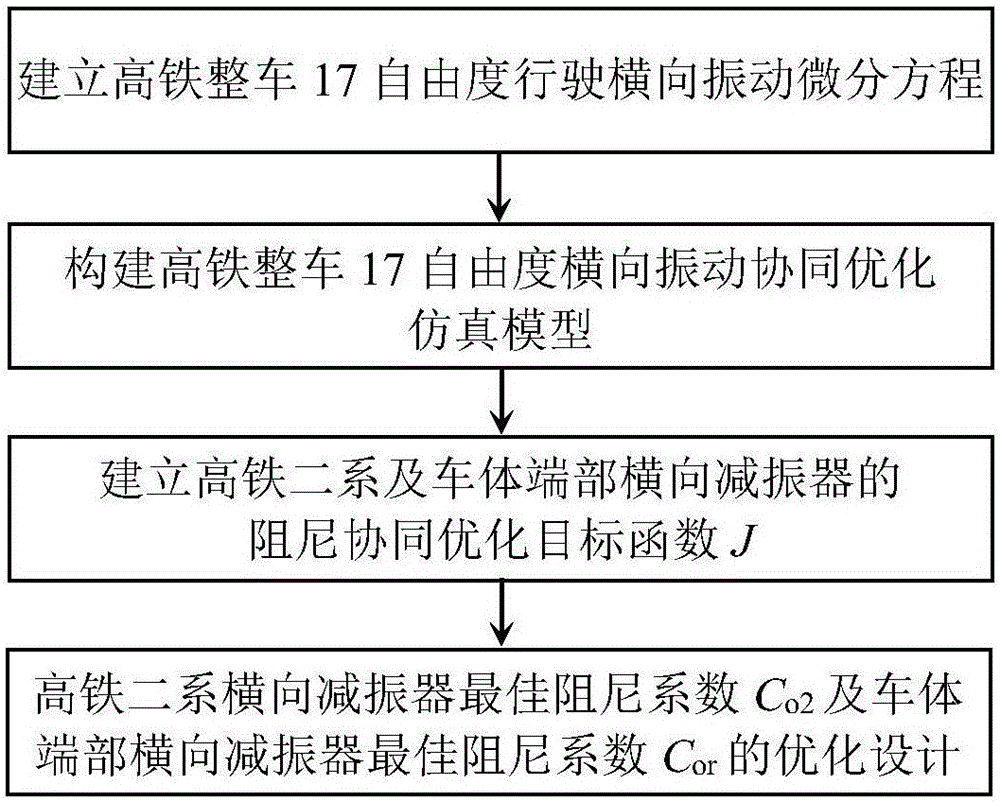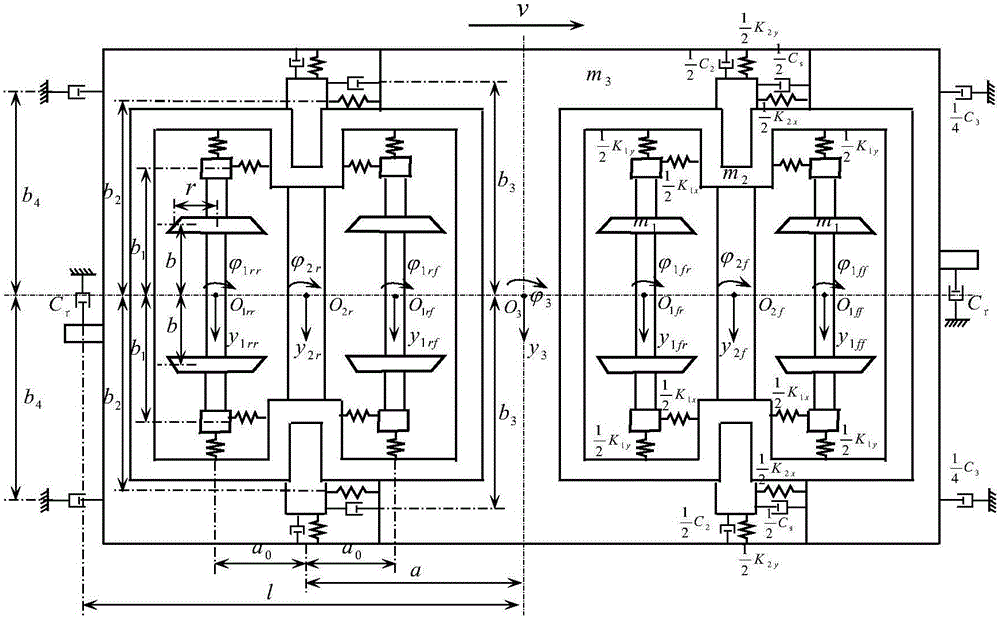Collaborative optimization method for damping coefficients of high-speed rail secondary transverse damper and vehicle body end transverse damper
A lateral shock absorber and collaborative optimization technology, which is applied in the fields of instruments, electrical digital data processing, special data processing applications, etc., can solve the theoretical design method without a given system, the difficulty of dynamic analysis and calculation, and the inability to meet the requirements of shock absorbers. Design requirements and other issues
- Summary
- Abstract
- Description
- Claims
- Application Information
AI Technical Summary
Problems solved by technology
Method used
Image
Examples
Embodiment Construction
[0072] specific implementation plan
[0073] The present invention will be further described in detail through an embodiment below.
[0074] Each bogie of a high-speed railway is equipped with two secondary transverse shock absorbers, and four longitudinal shock absorbers at the end of the car body and one transverse shock absorber at the end of the car body are installed between two adjacent car bodies, that is, no 1 = 2, n 2 = 1; the mass of its single car body m 3 =63966kg, moment of inertia of shaking head Roll moment of inertia J 3θ =77200kg.m 2 ; Mass of each bogie frame m 2 =2758kg, Moment of inertia of shaking head Roll moment of inertia J 2θ =2212kg.m 2 ; the mass m of each round pair 1 =1721kg, Moment of inertia of shaking head Axle weight of each wheel W=150000N; lateral creep coefficient f of each wheel pair 1 =16990000N, longitudinal creep coefficient f 2 =16990000N; The longitudinal positioning stiffness K of each wheel set 1x =13.739×10 6 N / m, ...
PUM
 Login to View More
Login to View More Abstract
Description
Claims
Application Information
 Login to View More
Login to View More - R&D
- Intellectual Property
- Life Sciences
- Materials
- Tech Scout
- Unparalleled Data Quality
- Higher Quality Content
- 60% Fewer Hallucinations
Browse by: Latest US Patents, China's latest patents, Technical Efficacy Thesaurus, Application Domain, Technology Topic, Popular Technical Reports.
© 2025 PatSnap. All rights reserved.Legal|Privacy policy|Modern Slavery Act Transparency Statement|Sitemap|About US| Contact US: help@patsnap.com



